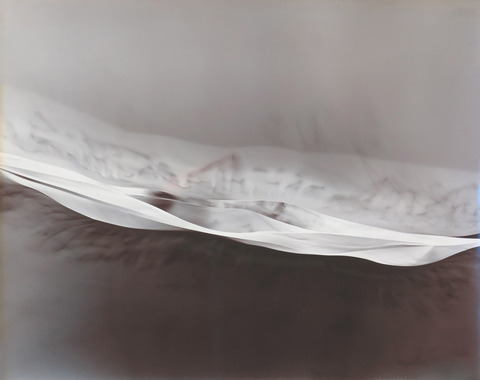This section contains both vintage photograms from 1974-1984 and recent works using scans of various elements of those pieces.

Horizontal Division #31979Photogram, Vintage, split-toned gelatin silver print, unique
16"x20"In technical terms, the photogram is one of the simplest and most elemental forms of photography. It uses no camera, no negative and therefore each “print” is unique. Typically one places objects on sensitized photographic paper in the darkroom - a light source is then turned on for a few seconds - flashing the uncovered paper. The sheet of photographic paper is developed in the conventional manner and the paper turns dark where it has been exposed, leaving ghostly, white, life-sized images of the objects that were placed on it. It is all a bit like drawing with invisible ink - nothing you are doing reveals itself until the sheet of paper is developed - at which point it is too late to change anything. I made my first photograms in 1974 and was drawn to their enormous potential for abstraction, as well as their rich tonal scale. What I really hoped to do in the work was to make photographs that were not always referencing something outside themselves. I also wanted to make works that looked like they were fabricated with light which is the very genesis of the word photography - photo meaning light and graphy meaning writing. I was also intrigued by the somewhat unpredictable nature of the process. No matter how carefully I prepared the architecture of the piece, the final result always had some element of surprise. Nearly all the work I have done since has embraced chance as an aspect of the work - whether in the Snail Drawings, the Chalkboards or the Tidal Plain Sites - I am never in total control as to what actually takes place, and what I document.
































